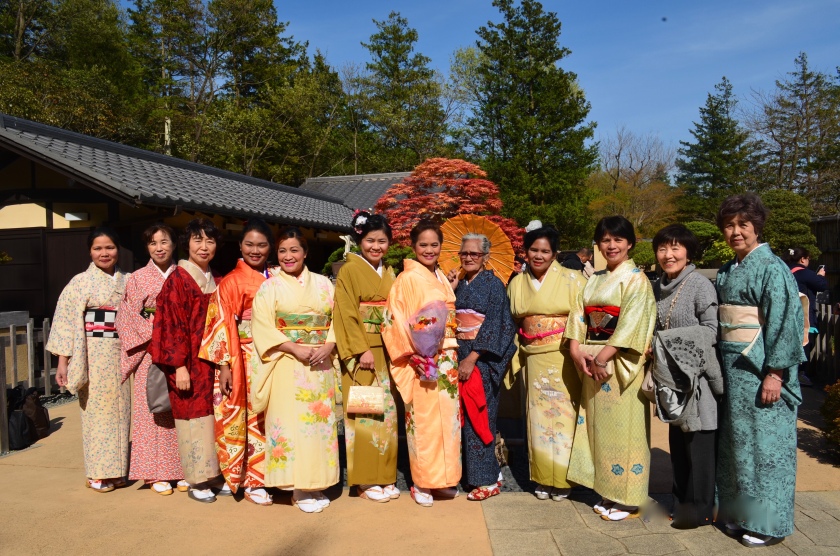OIJ #8: KIMONO


As we are celebrating International Women’s Day today, I’d like to express my deep respect and admiration to my host country’s women. I’m really fascinated by their strength and elegance and the way they carry themselves when they wear their traditional costume, kimono (着物).

I have female adult students who studied seriously on how to wear their “kimono.” Some became “kimono sensei” (teachers) and they expressed how difficult to go through the arduous training and cost a lot of money.
So many times I heard from the “kimono sensei” how busy they are during this time of the year because of the students’ graduation where some graduates, parents, and teachers wear “kimono.” There are seasonal events that are also OIJs which require the Japanese women to wear their traditional costume; for example, “shichi-go-san” (7-3-5 years old ceremony), “seijinshiki/seijin no hi” (20 years old Coming of Age celebration), weddings and formal events.

So many things to learn about Japanese “kimono” and what impressed me most is the wedding “kimono” of the future Empress of Japan. Quoting an article, “On the morning of the wedding, Masako’s body was purified in an ancient ritual. Next, court ladies dressed her in the formal bridal attire, the juni-hitoe, which literally means twelve-layered garment. The 30-pound silk kimono with a white silk brocade train took three hours to put on and cost more than $300,000. Masako’s hair was arranged in classic style with long, artificial strands added down her back.”

I’m one of the happiest women on earth when my dream to wear kimono together with my mom, sister and other family members, Olives, Inc. teachers, staff, students and friends came true and it’s during my golden birthday!



Reblogging about my Japanese-themed half-century birthday celebration where my entourage and I wore “kimono”! https://ec-tokyo.life/2019/02/26/tachikawa-citys-landmarks-25-showa-memorial-park/


